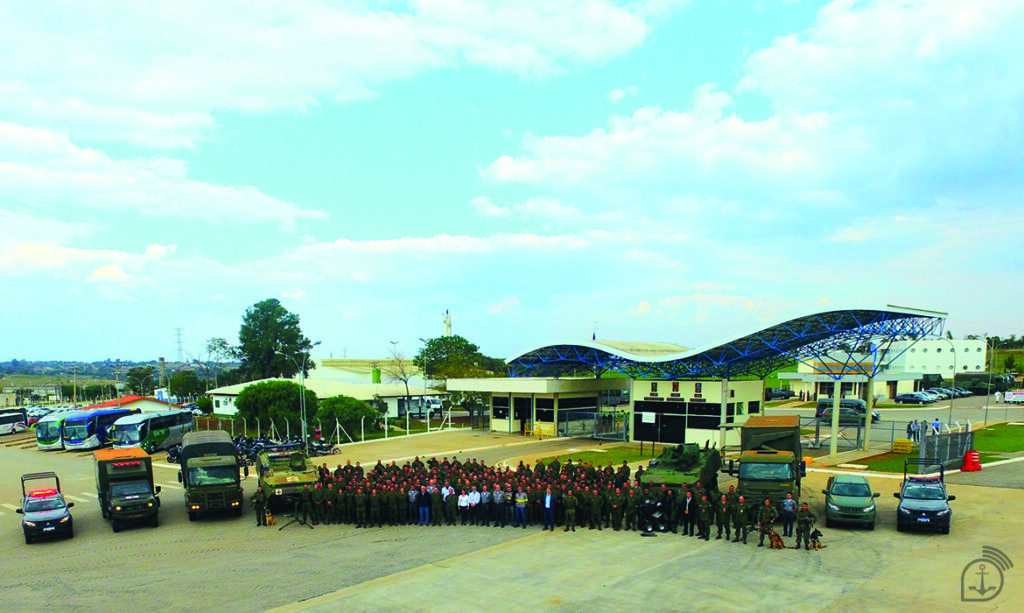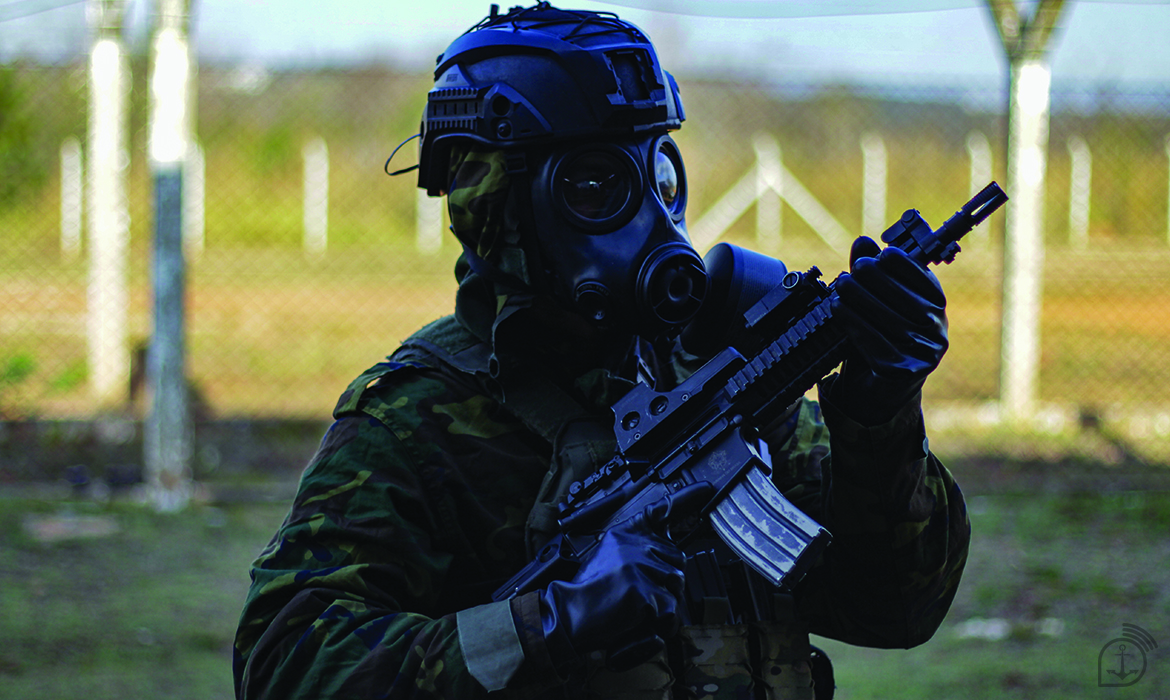The operation brought together civilians and military personnel in the security of the Navy’s Nuclear Program
By Second Lieutenant (RM2-T) Thaís Cerqueira – Iperó, SP
After a week of intense training, the largest Chemical, Biological, Radiological and Nuclear training carried out in the region of Iperó (SP) ended yesterday (26th). The exercise was coordinated by the Navy Technological Center in São Paulo (CTMSP) and by the Chemical, Biological, Radiological and Nuclear Defense Center of the Brazilian Navy (CdefNBQR-MB) and counted on the participation of several units of the Fleet Marine Corps Force (FFE) and of the Naval Agency for Nuclear Safety and Quality (AgNSNQ), which used the Naval Nuclear and Radiological Emergency Response Center System (SISCARE), enabling real-time follow-up of all the events carried out.
The synergy generated by the actions of all the organizations involved allowed the objective of improving the integrated response capacity to emergencies in the Aramar Experimental Center (CEA) to be fully achieved, and also brought together the different levels and sectors of the MB’s NBQR Defense System, in favor of maintaining the safety of the Complex where the Navy’s Nuclear Program (PNM) stages are developed.
The PNM is developed by civilians and military from the different organizations of the Navy’s Directorate-General of Nuclear and Technological Development (DGDNTM). Thus, the week was marked by a strong interaction between the civilian workers of the CEA and the Marines, who worked together in a series of planned events. The training was attended by 600 military personnel from various sectors of the MB – the Rio de Janeiro and Aramar NBQR Defense Battalions, the Marine Expeditionary Medical Unit (UMEM), the Marine Armored Battalion (BtlBldFuzNav), Marine Special Operations Battalion (BtlOpEspFuzNav), Naval Special Operations Command (CoNavOpEsp), among others – and about 300 civilian employees from several areas – operations, security engineering, and all who make up the Complex’s General Emergency Plan.

For the CTMSP Director, Vice-Admiral (Naval Engineer) Guilherme Dionizio Alves, the exercise marked an important paradigm shift regarding the safety and protection of people and facilities at CEA “the participation of CFN is essential to address the issue of ‘Safety and Security’. This event showed that it is possible to operate successfully with several sectors in favor of the PNM”, he highlights.
This integration demanded coordination among all involved, from the planning phase to its execution, bringing together the existing practices in the CTMSP with the specificities of FFE’s performance. According to the Commander of CDefNBQR-MB, Navy Captain Flavio Lamego Pascoal, “the activation of the Marine Corps Operational Group allowed the integration of the available response capabilities of both. This fact provided synergy and enabled the improvement of procedures.
According to Ricardo Gonçalves Gomide, Nuclear Technology Master, nuclear fuel cycle advisor and coordinator of the Aramar Local Emergency Plan, who has worked for over 35 years in the MB Nuclear Project, “distinct operational cultures worked in harmony and performed complex exercises without any incident or conflict, thus showing their technical capabilities”.
For Gomide, the exchange of experiences was the big gain of the exercise “the learning was general, we (civilians) learned techniques, mechanisms, devices and infrastructure for fighting emergencies, as well as the military of the FFE verified the resources available at Aramar, in an operational way and not only as a visit”.

Focus on preparation for possible emergencies at the Aramar Experimental Complex
There are seven operational units at the CEA, among them the Nuclear-electric Generation Laboratory (LABGENE) – conceived as an onshore prototype of the propulsion systems that will be installed in the future Brazilian Nuclear Propulsion Conventional Submarine – and the Uranium Hexafluoride Plant (USEXA), where the beneficiated uranium ore (yellow cake) is converted into gaseous uranium hexafluoride (UF6), one of the main raw materials for the production of nuclear fuel.
The types of emergencies that can occur at the Complex range from industrial (chemical leaks) to radiological (dissemination of radioactive material) and nuclear (nuclear fissions). During the exercise, five major events were simulated that allowed for a range of training focused on the safety of the area, personnel and facilities. Thus, ostensive patrol actions were planned, on foot and with PIRANHA IIIC armored vehicles; disturbance control with the use of less lethal weapons; surveillance and reconnaissance operations with remotely piloted aircraft (ARP); and anti-aircraft defense planning with reconnaissance of firing positions for surface-to-air missiles.
Teams specialized in Explosive Ordnance Disposal (EAD), from the Marine Engineering Battalion, conducted operations with the support of the remotely operated deactivation robot “Rover Defender”. The UMEM established an Advanced Trauma Unit (UAT), connected via satellite to the Naval Hospital Marcilio Dias, through telemedicine. War dogs were employed in police activities and in the detection of explosives and narcotics. Samples were collected and sent to the CDefNBQR-MB Mobile Laboratory.
The CoNavOpEsp established a Cyber Defense detachment and the BtlOpEspFuzNav developed actions to retake installations and rescue hostages with the Special Group for Retaking and Rescue.
The Marine Logistics Battalion and the Flores Island Marine Base ensured the deployment and setting up of an expeditionary base for 500 military personnel and about 50 vehicles brought from Rio de Janeiro.

*** Translated by the DEFCOPress team ***
